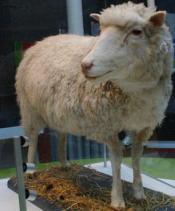Two Decades After Dolly

Ten years ago last week, on what would have been the tenth birthday of the first cloned mammal, the soon-to-be-world-famous sheep, CGS published a 16-page Report [pdf] titled A Decade After Dolly.
This is how it opened:
It’s been nearly a decade since the birth of Dolly the cloned sheep in the summer of 1996—followed by the announcement of her existence in February 1997—put the prospect of cloning human beings clearly before us.
Since then, a near consensus has emerged: Cloning human beings is a very bad idea, and should be prohibited. In the past ten years, more than forty countries have adopted prohibitions against human reproductive cloning. But the United States has not.
The past decade has seen the development of techniques that could produce not only cloned children, but also a “designer baby” world of genetically modified humans. Again, unlike many other countries, the US has not put in place binding regulations to prevent this
Mutatis mutandis, it holds up pretty well as a summary. Gene editing and cellular reprogramming have emerged as collaborators with cloning. Concerns about genetically modified humans have therefore become even more realistic and pressing.
On this the twentieth year, Nature published perhaps the most interesting anniversary article, which told the story of Dolly’s conception, birth, life and death entirely in the words of the people who were actually there (plus a few closing comments from other experts). Scientific American had a multi-part feature, covering science, ethics and endangered species (also picked up by GEN). Stat had a piece by Sharon Begley that focused on human cloning, or the lack of it. And Pravda declared that pet cloning is the most profitable business in South Korea.
The last word should go to Ian Wilmut, who led the team that made and reared the first cloned mammal, quoted in Nature:
It would be wrong to say my name's known all the way around the world — but Dolly's is.
Previously on Biopolitical Times:
- Free Dolly!
- Dog Cloning Infomercial on TV
- Tragedy on the Pharm
- Dog Cloning and Intellectual Property
Image license for non-commercial use.



